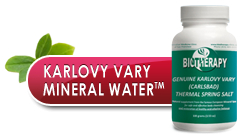Imagine the following picture: There is an “employer” (human body), and there is its “employee” (beneficial intestinal bacteria). Normally, they peacefully co-exist on the terms of a “contract.” The beneficial bacteria perform the labor, and for this work, the human body repays the “employee” with shelter and food. Thus, it is clear that in default of the contract by the “employer”, the “employee” revolts and leaves the body. However, space previously occupied by the “employee” cannot remain empty. Other “unfriendly invaders”, one of them being Candida-yeast, take this shelter and food. Since these hostile invaders cannot perform the job of “employee”, they suck up the vitality of the host.
The modern person daily breaks “the contract on cooperation” with the friendly, beneficial intestinal bacteria with the poor-quality food containing many harmful chemicals, the toxic substances inside and around the body, the disgusting ecological environment, and stress. These all leads to dysbiosis (Candida-yeast overgrowth or Small Intestine Bacteria Overgrowth-SIBO) and conducts to a “revolt” by the good bacteria against the owner. Nevertheless, the most common reasons of dysbiosis are antibiotics, more precisely their uncontrolled use, and modern diet.
In the United States, it is very difficult to find an individual who has not taken antibiotics, hormones, birth control pills, and painkillers, foods with plenty of sugar, sweets, and processed ingredients, sodas, chlorinated water, alcohol. There are not too many people, who eat only organic products. Thus, it is no wonder then that millions of Americans suffer from dysbiosis. In this condition, the friendly intestinal bacteria are disrupted by any of the factors previously discussed. Without competition, the Candida-yeast and other “unfriendly visitors” take over the gastrointestinal tract. Almost all individuals with chronic pancreatitis have taken several courses of the antibiotics, as well.
The gastrointestinal tract harbors more than 400 species of microorganisms. Some scientists consider intestinal flora as another human organ that is responsible for digestion, immunity, mood, manufacturing and absorbing of vitamins and other essential substances, metabolism, detoxification of the body from the poisonous chemicals, and so on. One of the primary functions of the beneficial intestinal bacteria is the control of the opportunistic microorganisms such as bacteria, viruses, parasites, yeasts.
To continue the analogy, imagine the big city, for example, New York. Nobody can eradicate the criminals there. However, the criminals are under control of the law and police forces. Remove them from the streets and after that, the criminals will make life in the city impossible. The same happens in the human body. Killing the beneficial bacteria causes uncontrolled growth of the Candida-yeast, parasites, and harmful bacteria. When the opportunistic infection has an opportunity to grow, it behaves as parasites. Besides it uses human nutrients, it also produces many toxins, which poison entire human being.
Candida-yeast, mostly Candida Albicans, is an opportunistic parasitic microorganism that lives in almost everybody’s digestive tract in tiny amounts and is a close relative to molds and fungus. Even one round of antibiotics destroys the friendly intestinal flora but does not kill the Candida-yeast.
Without competition from friendly flora, Candida-yeast takes over the GI tract. From the beginning, Candida-yeast occupies the large intestine, then expands to the small intestine (SIBO) and later, in the worse scenario, inhabits the entire body (Systemic Candidiasis).
How Does Candida-yeast Effect Pancreatic Health?
If yeast, sugar, and wheat are placed in warm water, fermentation takes place and alcohol will be manufactured there. Typically, alcoholic beverages, such as beer, wine, and whiskey, are made from the controlled use of fermentation. In individuals with intestinal dysbiosis and Candida-yeast overgrowth (Small Intestine Bacterial Overgrowth), this process persists without control inside their bodies continuously without stop. During this fermentation, besides the breakdown of carbohydrates into carbon dioxide and alcohol, Candida-yeast produces many other toxic substances known as mycotoxins. One of these is acetaldehyde, a substance that is a poison to the body and especially the pancreas. From the other hand, Candida-yeast makes the human being very acidic. You remember that acidity kills the pancreas.
Yeast is great for bread making because it gobbles up the sugar that is added to it. It makes a big, puffy, gassy mess that gets larger as flour is added. It is essentially the way the yeast affected patients usually feel: like bread. Patients feel bloated, puffy, and distended, especially after eating sweets and starchy food.
It can manifest itself in many forms and mimic many diseases of any kinds of organs or systems. Everyone can be a victim of Candida-yeast overgrowth whether he or she is old or young, male or female. Individuals may experience conditions such as sinusitis, nose bleeds, bladder infections, fatigue, thyroid dysfunction, bad breath, dry cough, hemorrhoids, constipation, IBS, burning and ulcerated tongue, bruising, damaged intestinal walls (leaky gut syndrome), acne, vaginal infections, premenstrual syndrome (PMS) and pancreatitis.
There is evidence that Candida-yeast overgrowth directly can cause acute and chronic pancreatitis. Candida can stop activity of the pancreatic digestive enzymes, thus cause indigestion and problems with absorption of essential nutrients such as vitamins and minerals. A deficiency of these vital nutrients, in its turn, decreases the amount and activity of pancreatic digestive enzymes causing a “vicious circle”. In healthy conditions, the pancreatic protease – the enzyme that digests the protein, kills the harmful bacteria and yeast. When the activity of protease decreases, our body loses one of its very important defense mechanisms and becomes vulnerable to Candida-yeast overgrowth too. It is an example of another “vicious circle” caused by Candida.
There are thousands of websites, which offer miracle remedy to kill the yeasts and promise to ‘Get rid of Candida”, “Eradicate Candida forever,” This is very far from the true. Taking yogurt and low-quality probiotics help only people who produce it. Let us see, Candida-yeast makes the colonies in the colon, which are covered by biofilm. Lactobacteria cannot attach to the intestinal walls and attack the yeast through the biofilm. Even we may kill Candida-yeast by the strong antifungal agents, without competition it grows again. Our food, water, air, surrounding environment is full of yeasts, mold, and fungus. A human being has the powerful system to keep yeast in check. We have just to restore what is broken.
There is no way to treat chronic pancreatitis without restoration of the beneficial intestinal bacteria.
Our Anti-Candida European Whole Body Cleansing Program focuses on the different aspects of Candida-yeast overgrowth:
- Starve and kill the Candida
- Restore friendly bacteria
- Evacuate the deceased Candida and toxins from the body
- Restore proper digestion, replace missing nutrients
- Enhance the immune system relieve stress.
To obtain the benefits of the Biotherapy Clinic from healing chronic Pancreatitis and Dysbiosis, one can select the following options:
- Telephone consultation (415) 409-3939
- Office consultation

